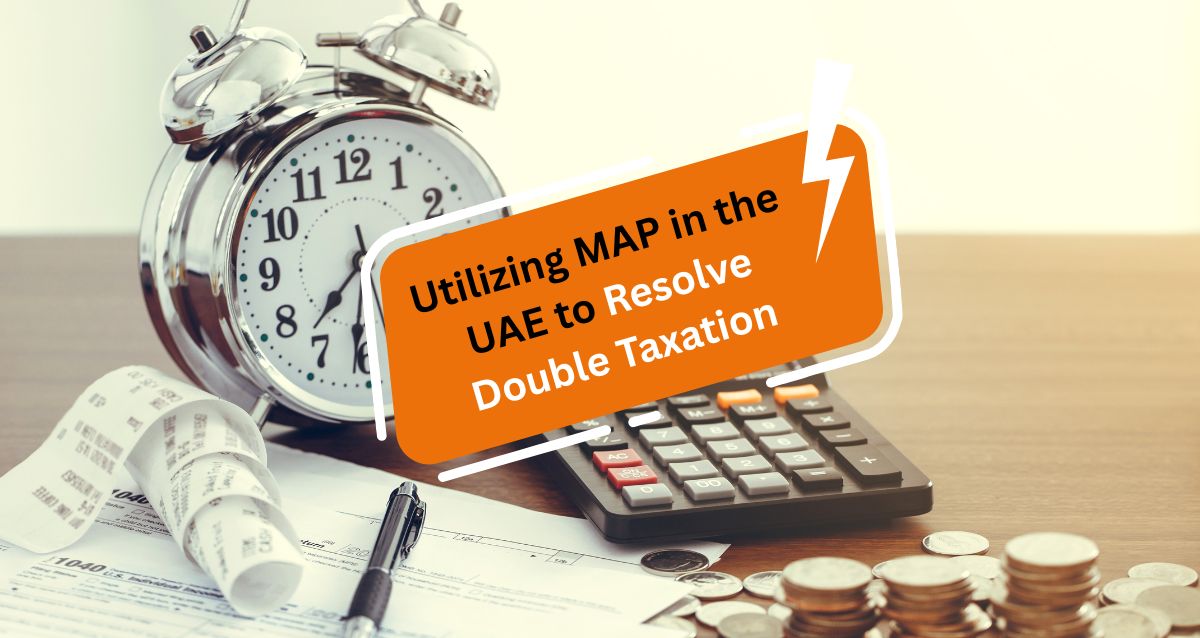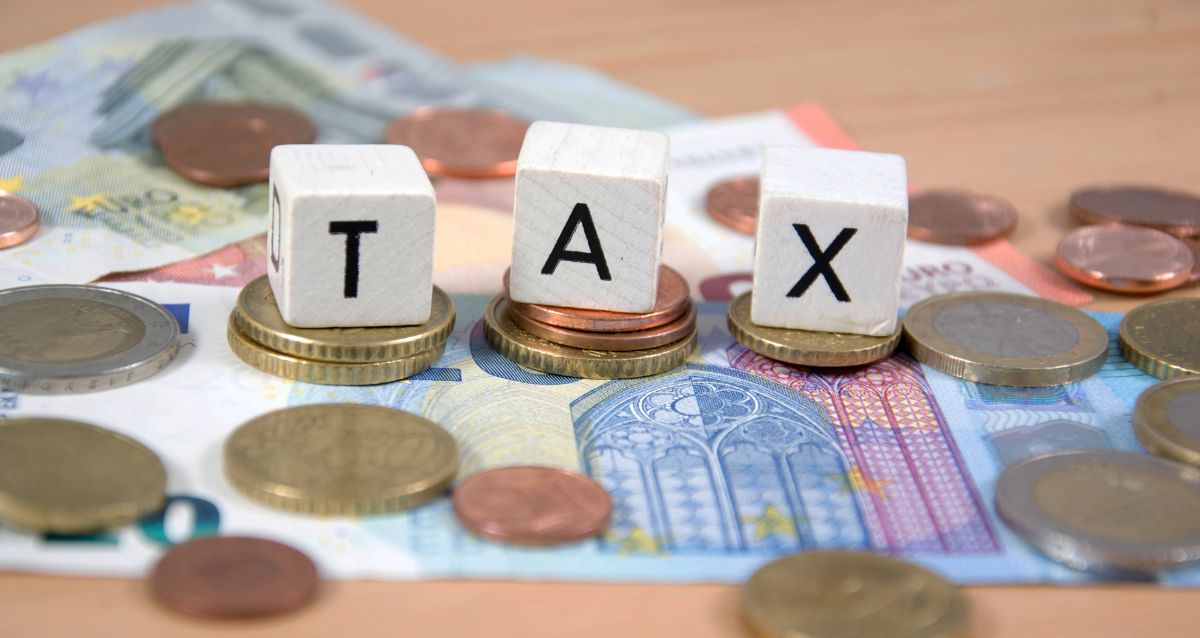Utilizing MAP in the UAE, A Pathway to Resolving Double Taxation Conflicts
Tax complications can act as a significant barrier for businesses across countries, particularly with the growth of cross-border investments. Companies often encounter situations where they have paid tax twice on the same income. One in the UAE and the other under the jurisdiction of a different country. This situation is referred to as double taxation.
Luckily, like every other tax-related problem, we have found the perfect solution for you. It is none other than MAP, also known as Mutual Agreement Procedure. What does that mean, you ask? It's simple. Governed under the UAE's Double Taxation Agreement or DTA, MAP provides you with the tools you require to resolve double taxation issues.
Explore this blog further to learn about the MAP and how it helps companies minimise tax risk and comply with cross-border regulations.
What is MAP?
The Mutual Agreement Procedure, short for MAP, is a treaty-oriented system that facilitates the resolution of international tax-based issues between two countries for either businesses or individuals who are required to pay tax in both jurisdictions. This comes under the basis of the Double Tax Agreement or DTA that is signed with other countries by the UAE.
MAP helps resolve the following:
- Disagreements on Transfer Pricing.
- Tax conflicts occur by a person or company is considered a resident of both countries at the same time.
- Permanent establishment taxation.
- Different understanding of DTA rules between the two countries.
In the UAE, it is not the FTA, but the Ministry of Finance that oversees this process through its International Tax Department.
When should you use MAP?
The use of MAP must come under consideration when a taxpayer is made subject to taxation in two countries simultaneously, while the taxpayer believes it to be unfair under the provisions of a DTA. Let's take a look at the following examples:
EXAMPLE 1
Transfer Pricing Dispute
Let's say, TechPlus GmbH, a German-headquartered company, has a branch in the UAE. During their tax audit in Germany, the company seemed to have been undercharged against their services in the UAE. Now the company is made to be taxed for the same profit by both countries. In this scenario, MAP can help by:
- Considering downward adjustments in the amount of tax in Germany.
- Or cancelling/reducing the demands of UAE assessments.
EXAMPLE 2
Dual Residency
Imagine a global executive who resides in Dubai, but at the same time falls under the criteria of being a tax resident of both the UAE and France. Here, both the UAE and France will try to tax them. However, MAP helps decide which country is eligible for charging tax.
EXAMPLE 3
PE Attribution
A construction company based in the UK is considered to have a permanent establishment in the UAE because of a huge long-term project. Now, the company is experiencing double taxation from the UAE and the UK. However, with the help of MAP, both tax offices can agree on how to split the profits and avoid excessive tax exposure.
UAE's Legal Framework for Mutual Agreement Procedure (MAP)
The Mutual Agreement Procedure (MAP) is a dispute resolution process provided under Article 25 of the OECD Model Tax Convention. It allows taxpayers to resolve issues related to double taxation that may arise from cross-border transactions.
The UAE has entered into more than 100 Double Taxation Agreements (DTAs) with various countries. Most of these treaties include MAP provisions, giving taxpayers a formal channel to resolve tax disputes between jurisdictions.
In addition, the UAE has adopted the OECD's Multilateral Instrument (MLI), which modifies existing DTAs to ensure broader and more consistent access to MAP. This streamlines the process and reinforces the UAE's commitment to international tax cooperation.
Before initiating a MAP request, it is essential to verify that the relevant DTA includes a MAP clause. Also, keep in mind the three-year time limit, which begins from the date when the taxpayer is first notified of the tax action believed to be in breach of the treaty.
MAP vs Domestic Remedies- What you need to know
A taxpayer in the UAE will not be able to or allowed to seek the help of the MAP, as well as seek domestic legal help from the court on the same tax matters at the same time. Hence, let's take a better look at how it works:
- If you'd like to file a MAP request, you are expected to suspend any legal action until your MAP is being worked out.
- However, you do have the freedom to choose not to accept the outcome of the MAP decision and pursue legal help.
- On the contrary, if you find the MAP decision satisfactory, then you are expected to cancel all legal appeals filed.
This helps proceedings stay fair and organised without causing any confusion.
Filing a MAP Request in the UAE
To initiate a Mutual Agreement Procedure (MAP) in the UAE, taxpayers must submit a formal request to the Ministry of Finance at uaemap@mof.gov.ae.
The request should include the following key details:
1) Names and Tax Registration Numbers (TRNs) of the entities involved
2) Fiscal years and tax periods under dispute
3) Copies of tax assessments, notices, or official correspondence received
4) Explanation of the specific DTA article(s) believed to be violated
5) Transfer pricing documentation, if applicable
6) Analysis of the time limitation, confirming the request falls within the 3-year window
7) Details of any previous MAP requests made on the same issue
8) The submission must be prepared in English or Arabic.
Where applicable, taxpayers may also choose to file the request simultaneously with the competent authority in the other jurisdiction, depending on the DTA terms.
Real-life example- MAP in action
Case Study: GulfChem DMCC vs Korea Tax Authority.
➤ What had happened?
A UAE-based free zone company, GulfChem, sold their chemicals in Korea to their parent company. However, the Korean tax authority found the prices to be high, refusing deductions. Thereby, raising transfer pricing adjustments. So, GulfChem ended up being the victim of double taxation by both countries.
➤ How was it solved?
In the time span of just 18 months, with the help of MAP, GulfChem was able to resolve the dispute. This makes us come to the conclusion that using MAP to resolve disputes is much more efficient and faster than going through the traditional methods of legal proceedings at court. The measures taken were:
- MAP was applied in both countries.
- Contracts, Transfer pricing study, and proof of payments were shared.
- The CAs from both Korea and the UAE came to an agreement after negotiations.
- Korea then eliminated double taxation and allowed a deduction.
The timeline and Resolution process simplified
- Eligibility Checking- 2 months
- Taxpayer replies to CA queries- 1 month
- The time of resolution- 24 months
- If both agree
- The taxpayer will withdraw legal appeals
- FTA shall update the records
- If the taxpayer disagrees, the legal route can be taken.
Arbitration is permitted for some DTA's if the issue cannot be resolved with MAP.
Areas where MAP may not work
MAP may not help:
- When there is no tax treaty between the UAE and the other country.
- If it applies to only the local law.
- When the request is filed 3 years after the issue of the first notice.
- If the taxpayer has agreed to a settlement or the decision has been made.
- If Anti-abuse rules are involved, which do not align with the DTA.
The best practices for a successful process
- Don't wait till the last minute and file early.
- Submit all documents upfront.
- Work with people who are experienced in cross-border tax.
- Regular flow of communication is important with the UAE CA.
- Plan your MAP and local approaches at the same time.
How Flyingcolour Tax Consultant Can Assist?
At Flyingcolour Tax Consultant, our international tax team supports multinational businesses throughout the MAP process. We offer end-to-end assistance, including:
- Assessing MAP eligibility and developing a tailored strategy
- Drafting and preparing MAP requests with all necessary documentation
- Coordinating with foreign tax advisors to ensure consistent bilateral submissions
- Liaising with the UAE Competent Authority and managing all ongoing correspondence
- Providing robust transfer pricing files and economic analyses to support the case
- With our in-depth understanding of UAE tax treaties and international dispute resolution mechanisms, we help clients resolve cross-border tax issues efficiently and compliantly.
To learn more about Utilizing MAP in the UAE to Resolve Double Taxation, book a free consultation with one of the Flyingcolour team advisors.
Disclaimer: The information provided in this blog is based on our understanding of current tax laws and regulations. It is intended for general informational purposes only and does not constitute professional tax advice, consultation, or representation. The author and publisher are not responsible for any errors or omissions, or for any actions taken based on the information contained in this blog.


